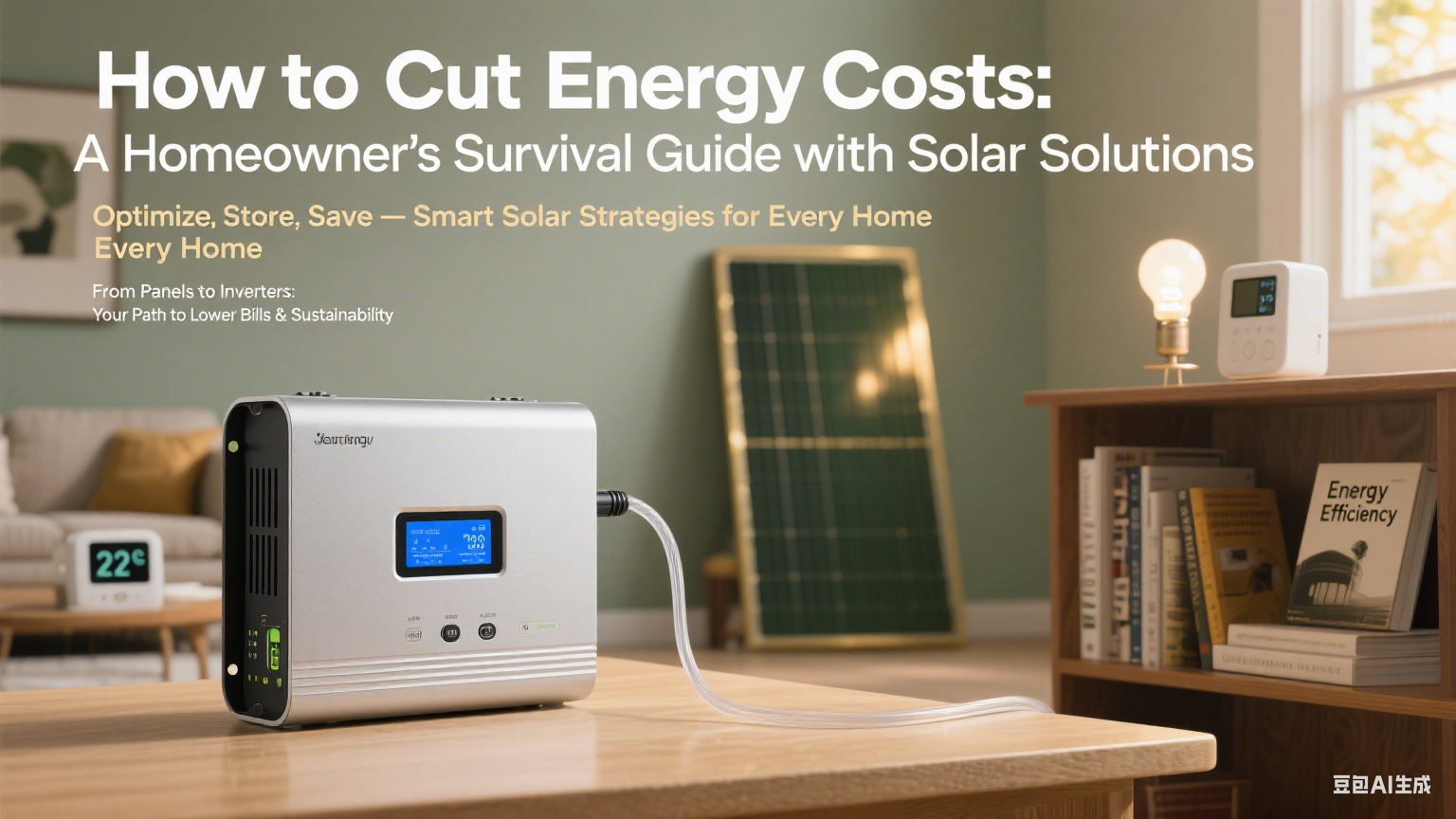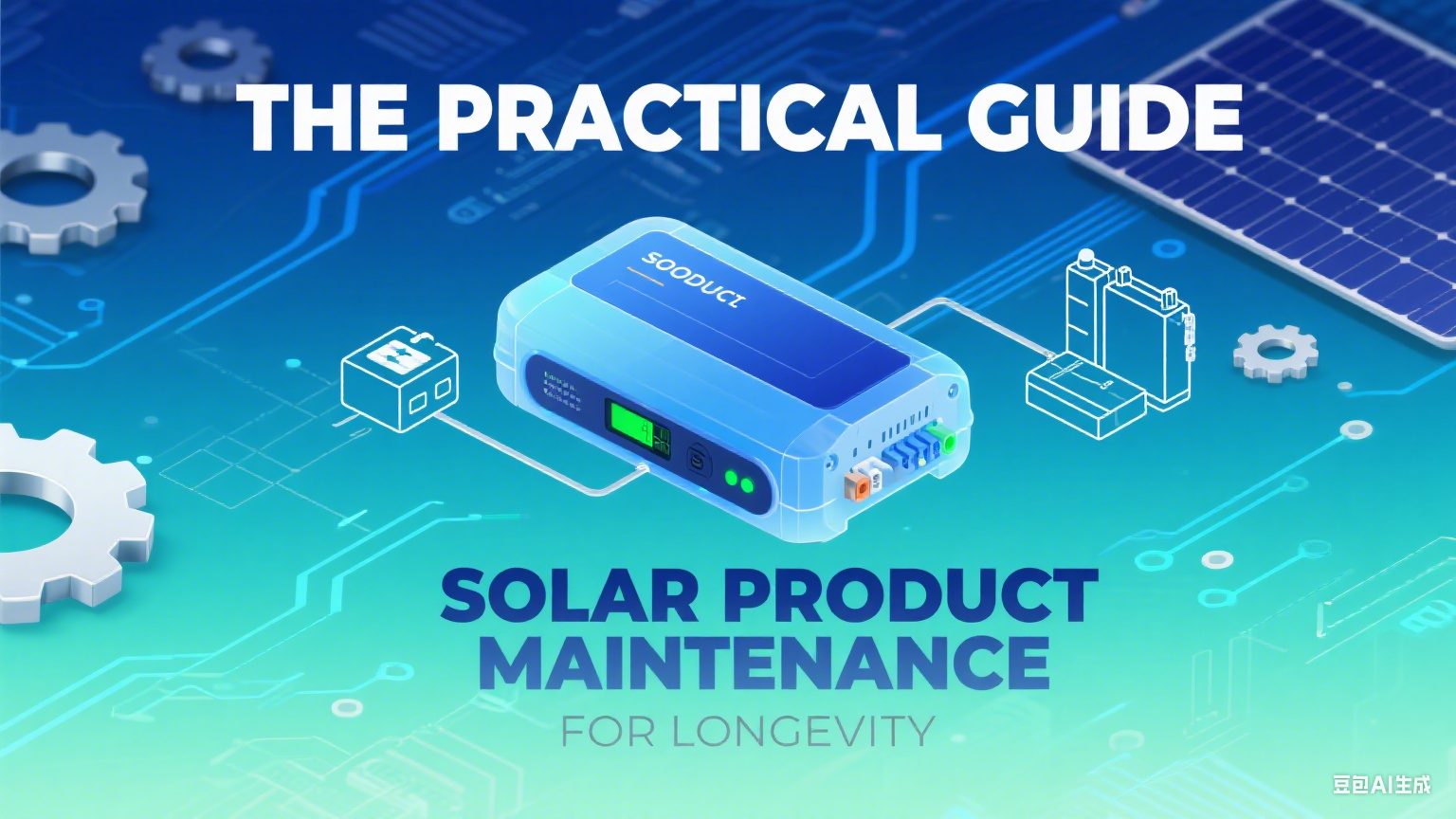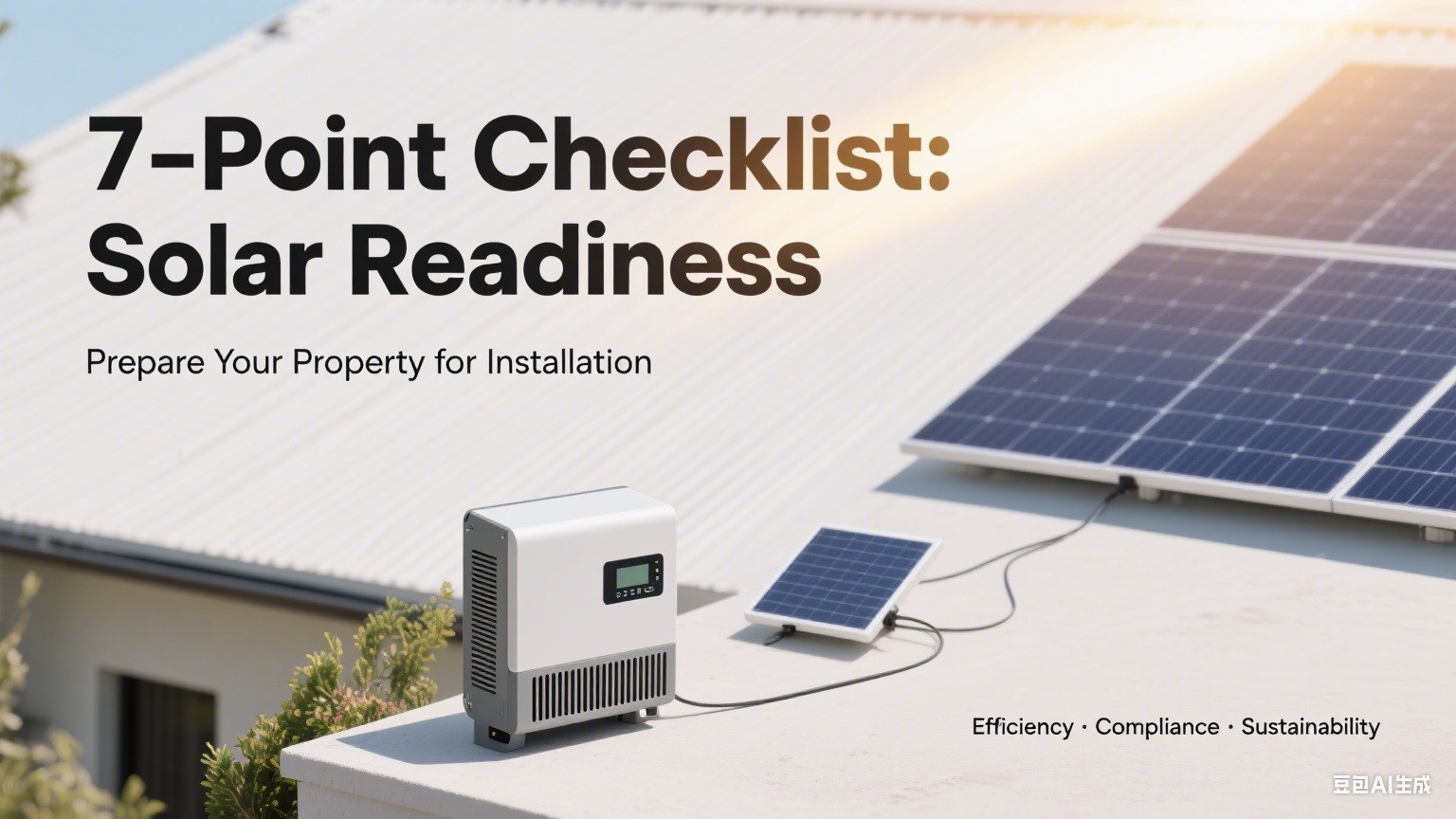How to Cut Energy Costs: A Homeowner's Survival Guide with Solar Solutions

Introduction
Rising energy costs can be a significant burden for homeowners. However, solar solutions offer a powerful way to reduce these costs while also contributing to a more sustainable future. This guide provides practical tips and strategies for cutting energy costs using solar products and other energy-efficient measures.
1. Assess Your Current Energy Usage
1.1 Review Your Utility Bills
Start by analyzing your past 12 months of energy bills to understand your average monthly consumption. This data will help you determine the size of the solar system you need to meet your energy demands.
1.2 Identify High-Consumption Appliances
Common high-energy users include HVAC systems, water heaters, refrigerators, and large appliances like washers and dryers. Focusing on optimizing these devices can yield significant savings.
2. Invest in Solar Panels
2.1 Choose High-Efficiency Panels
High-efficiency solar panels, such as monocrystalline panels, can generate more electricity in less space. This is particularly important if you have limited roof space.
2.2 Optimize Panel Placement
Ensure your panels are installed in an area with maximum sunlight exposure. Panels should ideally face south (in the Northern Hemisphere) and be tilted at an angle close to your latitude.
2.3 Consider Solar Tracking Systems
Solar trackers can dynamically adjust the angle of your panels to follow the sun, maximizing energy capture throughout the day.
3. Implement Energy Storage Solutions
3.1 Install a Solar Battery
A solar battery allows you to store excess energy generated during the day for use at night or during power outages. This reduces your reliance on grid electricity and can lower your bills further.
3.2 Use Smart Energy Management Systems
Smart inverters and energy management systems can optimize energy usage by automatically adjusting consumption based on real-time data.
4. Upgrade to Energy-Efficient Appliances
4.1 Choose Energy Star-Certified Appliances
Energy Star appliances are designed to meet strict energy efficiency standards, reducing your overall energy consumption and lowering your bills.
4.2 Invest in Inverter-Based Appliances
Inverter technology adjusts power usage based on the appliance’s load, significantly reducing energy consumption for devices like air conditioners and refrigerators.
5. Optimize Your Energy Usage Patterns
5.1 Align Usage with Solar Production Hours
Run energy-intensive appliances like dishwashers, washing machines, and electric vehicle chargers during daylight hours when your solar panels are generating electricity.
5.2 Avoid Peak Hour Usage
Peak hours (usually in the evening) have higher electricity rates. Shift non-essential appliance usage to off-peak hours to save on costs.
6. Leverage Government Incentives and Rebates
6.1 Federal and State Incentives
Take advantage of federal tax credits, state rebates, and local incentives to offset the initial cost of your solar installation. These programs can significantly reduce your out-of-pocket expenses.
6.2 Net Metering Programs
Net metering allows you to sell excess solar energy back to the grid, earning credits that can offset your electricity bills.
7. Maintain Your Solar System
7.1 Regular Cleaning
Keep your solar panels clean to maximize efficiency. Remove dirt, dust, and debris regularly, especially in dry or dusty areas.
7.2 Inspect for Damage
Regularly inspect your panels for cracks, chips, or other damage. Address any issues promptly to maintain peak performance.
7.3 Monitor System Performance
Use monitoring tools to track your system’s performance and identify any potential issues early. This helps ensure your system is operating efficiently.
8. Additional Energy-Saving Tips
8.1 Use LED Lighting
LED bulbs use up to 80% less energy than traditional incandescent bulbs and last much longer. Replacing all lights in your home with LEDs can significantly reduce your lighting costs.
8.2 Insulate Your Home
Proper insulation reduces the need for heating and cooling, lowering your overall energy consumption and bills.
8.3 Unplug Devices When Not in Use
Many devices continue to draw power even when turned off. Unplug them or use smart power strips to eliminate standby power consumption.
8.4 Keep HVAC Filters Clean
Regularly cleaning or replacing HVAC filters improves efficiency and reduces energy use.
Conclusion
Cutting energy costs is a multifaceted process that involves optimizing your solar system, upgrading to energy-efficient appliances, and adopting smart energy usage habits. By following the strategies outlined in this guide, you can significantly reduce your energy bills while contributing to a more sustainable future. Whether you’re just starting with solar or looking to maximize your existing system, these steps will help you achieve long-term savings and energy independence.

For more information on photovoltaic technology, please visithttps://youtu.be/JB56vgBNr6E?si=48ZjW1I9exvg7s-o for detailed content.



